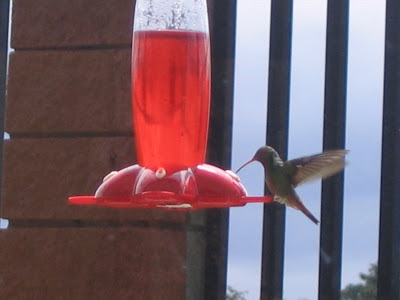



We’re sitting here in the dark because the power went out about 15 minutes ago. It came back on, but only long enough to raise our hopes. Surprisingly, power outages in our neighborhood are fairly infrequent. I’d guess we have one a week, but usually only long enough to reset the clock on the microwave, and usually during the day. We have them often enough at work to be disruptive, but on the other hand, the power went out in Maple Grove last week as I was talking to one of my colleagues on the phone. This particular instance is annoying since it happened while Nancy was just starting to cook dinner and the Vikings were on TV.
Last week we reported on the “dark side” of Costa Rica, and I guess the opening paragraph seemed like more (literally) dark matter. But, no matter how bad things are, they can always be worse. When we spoke to some of our friends at Bible Study on Tuesday we learned that they had been stuck in traffic for 6 hours on Friday night because a boulder had fallen off a cliff and onto a car on the same road we took, killing a man and a baby. In the same vein, on Tuesday morning on my drive to work I passed the scene of an accident. The motorcyclist was still on the pavement – with a tarp covering all but his feet.
So all in all, our trip to Puerto Viejo was great. As the pictures attest, the jungle comes right up to the beach. Normally the area does not have a lot of rain at this time of the year, but it had rained before we arrived and was windy while we were there which meant we weren’t able to snorkel. We did enjoy a long walk on the beach, some body surfing and a dinner in possibly the seediest eatery we’ve ever been in. I wouldn’t really call it a restaurant.
We were greeted warmly by our host, Pepo, upon our arrival late Saturday afternoon at Kukula Lodge. We decided to walk to a restaurant he had mentioned since we’d been driving all day and the road through Puerto Viejo was one big series of huecos, causing cars to weave like a slalom skier. Anyway, it was dark, so as we walked we realized that our friends had said not to go into town at night because of crime and rampant use of “ganja”. Now we weren’t in town, but our recent experience with the tire changing bandit was enough to put us on edge. So we turned around, and as we headed back to the lodge, we noticed the aforementioned eatery - but from afar it looked like a restaurant – the sign even said “Caribbean food”. As we ventured closer, however, I noticed that the clientele was not your usual band of tourists, and I worried that the two dogs and a cat wandering about the place were adding more than ambiance to the food. The proprietor, an ancient stoner explained that “here we have food and some beers.” We were starving at this point, but even so I was all set to provide Nancy with an exit strategy when she shocked me by asking “what kind of food”. “Fried chicken”. “OK” she said, and we proceeded to wipe off a few lawn chairs and sit at a plastic table, while one of the clientele tied up the more rambunctious of the two dogs. The proprietor brought us two bottles of Imperial – la cervesa de Costaricienses, along with two glasses (cleaned sometime this century) filled with ice. For the beer. “We’ll just use the bottles” we explained, noting that even the regulars weren’t using glasses either. We gobbled down the chicken, mopped up the greased, swilled down the beer and high tailed it back to the lodge, along the way picking up a distinct odor that was not tobacco.
A “lodge” in Costa Rica means, as we have learned, that instead of windows and air conditioning, expect ventilation and noise. The walls are literally wood frames covered with screens and a variety of wooden slats to maintain privacy. Despite the high heat and humidity in the area, at night these lodge rooms maximize air circulation, and remain fairly comfortable. However, rain falls hard in the rainforest, and the metal roof rattles like a snare drum. When it isn’t raining, there are plenty of creatures to provide the cacophony. Frogs, insects, birds, howler monkeys, falling coconuts, you name it, you hear it and sleep becomes a series of sighs and turns.





















































